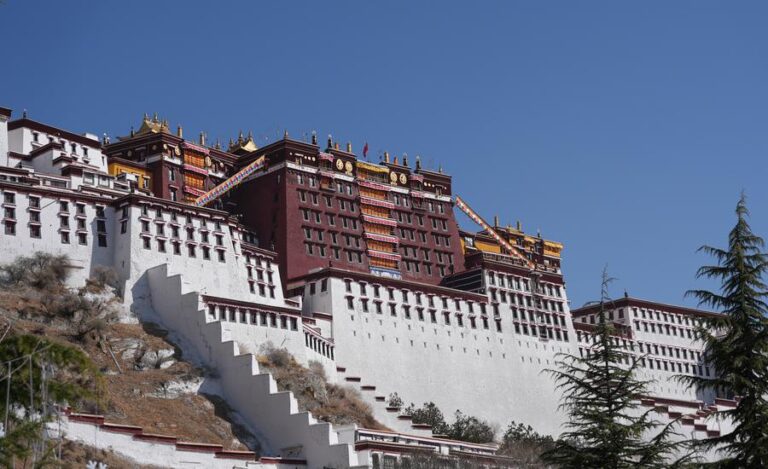BEIJING, Aug. 5 (Xinhua) — Southwest China’s Xizang Autonomous Region has seen steady economic growth, with its regional gross domestic product (GDP) projected to surpass 300 billion yuan (about 42 billion U.S. dollars) this year, according to a press conference held on Tuesday.
The region’s GDP reached 276.5 billion yuan in 2024, 155 times that of 1965 — when the autonomous region was established — reaching an average annual growth rate of 8.9 percent, Wang Junzheng, secretary of the Communist Party of China Xizang Autonomous Regional Committee, told the press conference on the 60th founding anniversary of Xizang Autonomous Region.
Wang noted that while it took the region 50 years to achieve its first 100 billion yuan in GDP, the second 100 billion yuan milestone was reached in just six years.
Since 2021, sustained efforts have further expanded Xizang’s economy while improving the quality and efficiency of growth.
Modern industries, including clean energy, cultural tourism and plateau light industry, are laying the foundation for a modern industrial system. The region continues to enhance its self-sustaining development capacity, with key economic indicators consistently ranking among the highest growth rates in the country for several consecutive years, Wang said.
REMARKABLE PROGRESS
Over the past six decades, Xizang, under the leadership of the CPC, has established a socialist system and people’s democratic governance, implemented reform and opening-up, and achieved moderate prosperity in all respects. The region has undergone a historic transformation — from darkness to light, backwardness to progress, poverty to prosperity, autocracy to democracy, and isolation to openness, Wang said.
The region has achieved the historic feat of eliminating absolute poverty, implemented a 15-year publicly funded education program from kindergarten to senior high school, and increased the average life expectancy to 72.5 years, he added.
In 2024, the per capita disposable income of urban residents reached 55,444 yuan, 121 times that of 1965, while rural residents’ per capita disposable income rose by nearly 200 times to 21,578 yuan. The average annual growth rates of the incomes reached 8.5 percent and 9.4 percent, respectively, according to the figures released at the press conference.
The region received 63.89 million domestic and international visitors in 2024, a 15.8 percent year-on-year increase, with inbound tourists skyrocketing 188.2 percent. Growth momentum continued in the first half of 2025, as the region welcomed 32.18 million visitors, up 11.7 percent year on year, said Gama Cedain, chairman of the regional government.
By the end of 2024, Xizang’s total operational road length reached 124,900 km, while its railway length stood at 1,359 km. Additionally, the number of domestic and international air routes reached 183.
Since 2021, over 400 billion yuan has been spent on major projects, including the construction of the Sichuan-Xizang Railway and the launch of a hydropower project in the lower reaches of the Yarlung Zangbo River, according to Wang.
ECOLOGY PRIORITIZED
Addressing a question about Xizang’s ecology and green development, Wang said the region always prioritizes ecology, with more than half of its land area under strict ecological protection.
The region strictly enforces the law on ecological protection of the Qinghai-Tibet Plateau, firmly prohibiting all pollution-prone projects on the plateau, Wang added.
An afforestation project has added over 66,000 hectares of trees in and around the regional capital Lhasa in recent years, bringing Xizang’s forest coverage to 12.31 percent.
The region is also promoting low-carbon development, leading China in clean energy with over 99 percent clean power generation in 2024, according to Wang.
From 2021 to 2024, 13.68 billion yuan in grassland conservation subsidies were distributed to 2.26 million farmers and herders to protect grassland from overgrazing.
“Xizang is still among the world’s regions with the best ecological environment,” Wang said. ■

